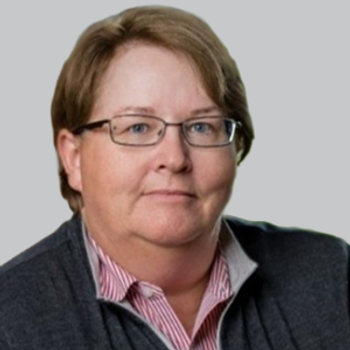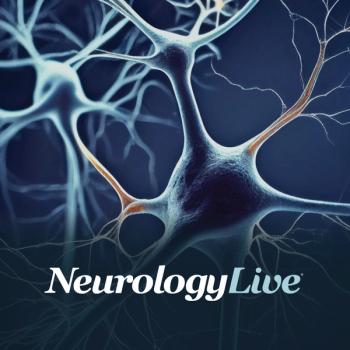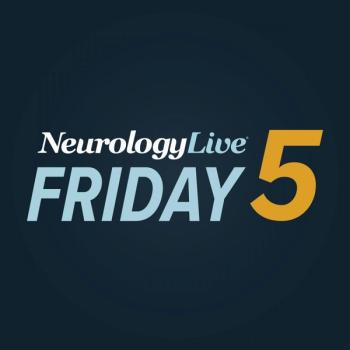
NeuroVoices: Ajay Gupta, MD, on Phenotyping Tuberous Sclerosis Complex Into Disease Clusters

The director of the Tuberous Sclerosis Program at Cleveland Clinic provided clinical commentary on a novel clustering analysis in TSC, revealing how phenotype-genotype insights can lead to more personalized treatment and surveillance.
Tuberous sclerosis complex (TSC) is a phenotypically heterogenous autosomal dominant epilepsy that impacts around 1 to 2 million people globally. The disease is known for its highly variable clinical presentation, even among individuals with the same genetic mutation–making it a classic example of a disorder with variable expressivity. A recently led observational, prospective, natural history cohort study sought to examine whether a clustering approach could uncover subgroups of disease trajectories in TSC.
Led by Ajay Gupta, MD, a pediatric epilepsy specialist at
As part of a new iteration of NeuroVoices, Gupta sat down to provide clinical insight on these latest data and what they mean for patients and clinicians alike. Gupta, who also serves as director of the Tuberous Sclerosis Program at Cleveland Clinic, how the study reversed the traditional genotype-first model to investigate genotype correlations based on clinical presentation, resulting in key associations. He also elaborated on the design and novelty of the study, how the clusters were defined, and the clinical implications for surveillance, epilepsy treatment, and future trial recruitment. Gupta also highlighted the potential overlap between clusters, and the potential for better risk stratification.
NeurologyLive: What sparked interest into a study like this?
Ajay Gupta, MD: So far in tuberous sclerosis complex, there have been few studies on genotype-phenotype correlation. I would say only a small percentage of those—maybe two or three—have involved larger cohorts of 100 to 200 patients. What we’ve done in the past is take all the patients, look at their genotype information (their genetic mutation), and then correlate it with their phenotypic information—that is, their TSC signs and symptoms.
In this study, we did three things differently, and the reason we did that was because we really wanted to take a deep dive into genotype-phenotype correlation. That was the propelling force behind this. Rather than going from genotype to phenotype, we asked: can we take a large cohort of phenotypes and go back to see what deep genotype information we can extract based on the phenotype?
How did we land on these specific clusters, and how does each differ?
Before I go there, let me highlight the innovation of this study. First, we were lucky to have a large cohort of patients enrolled in the Tuberous Sclerosis Natural History Database. Many people may not be familiar with this, but it was launched in 2006 with the help of the Tuberous Sclerosis Alliance and initial funding from the Department of Defense. This database recruited a clinical network of physicians—people like myself, geneticists, neurologists—who began contributing data. Over time, the database has grown to include over 2,000 patients, all of whom have a confirmed clinical and, in most cases, genetic diagnosis of TSC.
We took this large, very well-phenotyped cohort—patients who have been studied annually, with longitudinal data going back to the day of diagnosis—and selected 29 phenotypic characteristics across domains like brain, skin, kidney, and more. In the brain category, this could include epilepsy, tumors, autism, intellectual disability, etc.
We then conducted an unbiased, unsupervised clustering analysis, which means the computer grouped patients purely based on their phenotypes—no assumptions made—and generated clusters. After identifying clusters, we went back and looked at the genotype: which mutations, which genes, which exons, and what types of mutations were represented in each cluster.
What we found from this analysis of over 900 patients is that four clusters emerged, each with roughly equal frequency. The analysis method, including steps to ensure age was not a confounding factor, is detailed in the paper.
Cluster 1 was the tumor cluster. Patients in this group had a much higher frequency of brain and renal tumors.
Cluster 2 represented infants who were very sick early in life, particularly with epileptic spasms or West syndrome, a severe form of epilepsy.
Cluster 3 was dominated by neurodevelopmental disorders—autism, intellectual disability, learning disabilities—and also had a high prevalence of various types of epilepsy.
Cluster 4 included what I would call “mild phenotype” patients. These individuals might’ve been diagnosed incidentally, possibly because a child or family member had TSC. They had minor skin findings or focal seizures that were well controlled, and little else—no major cognitive issues, no tumors, or only mild involvement.
Variants affecting the Rho domain of TSC1 (exons 5–12) were significantly more likely to be found in Cluster 1 and significantly less likely in Cluster 4. Can you provide more context on these findings and their significance?
That’s exactly right. Once we identified the clusters, we analyzed each group for genotype associations. For Cluster 1—the tumor cluster—we looked to see if patients were more likely to have TSC1 or TSC2 mutations, and within those, which exons were involved. We also examined mutation types: missense, nonsense, frameshift, stop codon, and so on.
What we found was that mutations in the Rho domain of TSC1 (exons 5–12) were significantly enriched in Cluster 1, meaning patients in this group were more likely to have mutations in this region. Conversely, those variants were significantly less likely in Cluster 4, the mild group.
This is useful in both directions. If you know a patient is in Cluster 1, you can predict a higher likelihood of a TSC1 Rho domain mutation. Conversely, if a patient has such a mutation, you can anticipate a higher risk of tumor development. That gives you the opportunity to personalize surveillance strategies.
For example, brain tumors in TSC typically start to appear in adolescence, and kidney tumors later in adulthood—30s or 40s. If you know a patient has this mutation, you can start earlier and more aggressive monitoring: more frequent scans, symptom screening, and preventive measures.
The same goes for Cluster 2—patients prone to early-life epileptic spasms—or Cluster 3, where cognitive issues are more likely. And we now have solid evidence that early and effective epilepsy treatment can change the trajectory of cognitive development.
So the takeaway is this: early diagnosis and remission of seizures in TSC—not just control, but remission—can preserve cognitive function and improve long-term quality of life, learning, and psychosocial outcomes.
Are there any overlap between the clusters that might make it difficult to project a patient’s disease trajectory?
That’s a very good point. Tuberous sclerosis is extremely variable. These clusters are not exclusive. For example, someone in Cluster 2 might also develop tumors and end up closer to Cluster 1.
What we’re saying is: these clusters are a guidance tool, not a fixed roadmap. They help clinicians get a sense of where a patient currently falls—phenotypically and genotypically—and what risks might lie ahead.
Larger, future studies will be needed to replicate and refine these clusters. Right now, we don’t know with certainty which patient is prone to what. But this project represents the beginning of that kind of thinking—to offer better patient counseling, better preventive strategies, and ultimately, earlier and more effective treatment.
What are the implications on treatment and research from a study like this?
From the current state of the art, I believe that knowing a patient’s genotype and phenotype gives you the ability to tailor surveillance and treatment strategies.
For instance, if a patient falls into Cluster 1 and has a mutation in TSC1 exons 5–12, I would be more vigilant with imaging of the brain and kidneys—even before symptoms develop—because tumors can be silent for a long time.
Surveillance can be burdensome: scans can be costly, uncomfortable, and may require sedation in children. So if we can identify who needs it most, that’s a big advantage. Conversely, if a patient is in Cluster 4, we might reduce surveillance frequency. In research, I think this clustering framework will be invaluable. As we move into an era of gene therapies, ASOs, or other disease-modifying interventions, this can help us select trial candidates more precisely.
For example, a gene therapy trial aimed at reducing tumor burden should enroll Cluster 1 patients. If a trial is targeting early cognitive impairment or autism, it makes sense to recruit from Cluster 3. Instead of enrolling everyone with TSC—which is a very heterogeneous population—we can phenotype and genotype match candidates, leading to clearer outcomes and more efficient studies.
Transcript edited for clarity.
REFERENCE
1. Dhawan A, Kumar H, Huang H, Gupta A. Phenotypic clustering in tuberous sclerosis complex reveals four distinct disease trajectories. Brain. Published online February 21, 2025. doi:10.1093/brain/awaf072
Newsletter
Keep your finger on the pulse of neurology—subscribe to NeurologyLive for expert interviews, new data, and breakthrough treatment updates.


































